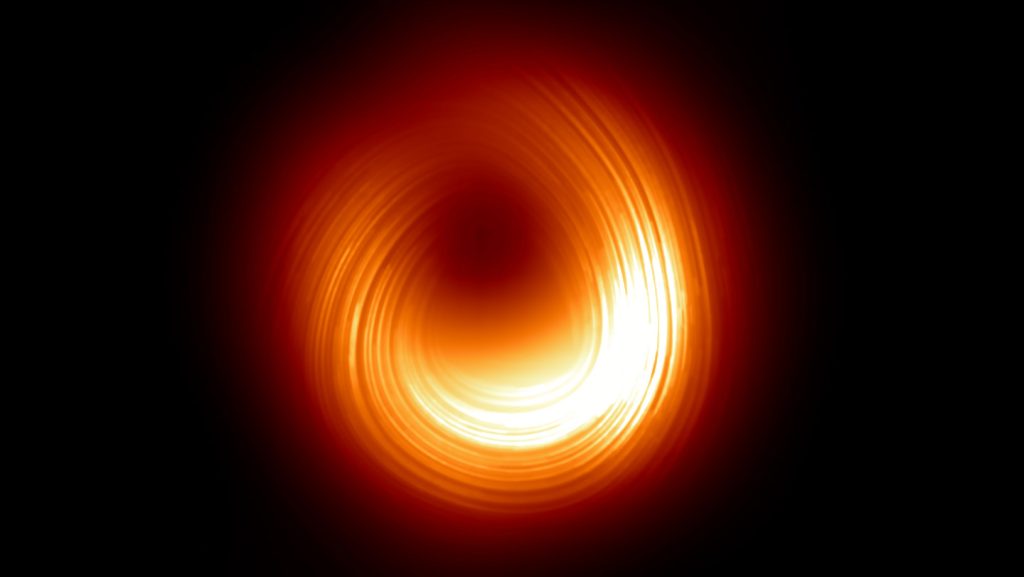Mysterious Magnetic Flip at Cosmic Giant Challenges Black Hole Physics
In a stunning astronomical revelation, scientists have discovered that the magnetic field surrounding the supermassive black hole at the center of galaxy M87 has completely reversed direction. This unexpected phenomenon, occurring roughly 55 million light-years from Earth, has left researchers puzzled and excited, challenging fundamental theories about these cosmic behemoths. The black hole, famously captured in humanity’s first-ever black hole image in 2017, is now forcing scientists to reconsider what we know about these mysterious objects and their dynamic environments.
When astronomers first captured the historic image of M87’s black hole (dubbed M87) in 2017, they observed not just the shadowy giant itself but also its surrounding accretion disk—a glowing ring of superheated plasma swirling around the black hole before potentially falling in. This initial observation revealed a magnetic field that appeared to behave according to theoretical predictions. The field is crucial for understanding how material interacts with black holes, as it helps funnel matter into the accretion disk while also potentially powering enormous jets of energy that can extend thousands of light-years into space. Given M87‘s enormous mass—about 6 billion times that of our sun—scientists expected its magnetic environment to remain relatively stable over human timescales.
However, follow-up observations using the Event Horizon Telescope, a planet-wide network of radio telescopes working in concert, revealed something entirely unexpected. By analyzing a property called polarized light—light waves oscillating in specific directions that reveal magnetic field orientations—researchers discovered that the magnetic field began to weaken dramatically in 2018, nearly disappearing from detection. Even more remarkably, by 2021, the field had completely flipped its orientation, essentially reversing direction in a cosmic magnetic somersault that defies current theoretical models. “No theoretical models we have today can explain this switch,” notes Chi-kwan Chan, an astronomer at Steward Observatory in Tucson and co-author of the study published in Astronomy & Astrophysics.
This discovery holds profound implications for our understanding of black hole physics. Accretion disks serve as the primary interface between black holes and the surrounding universe, where infalling material becomes superheated through friction and gravitational forces before potentially crossing the event horizon—the point of no return. The disk emits various forms of radiation, including X-rays and radio waves detectable by Earth-based telescopes, making it our primary window into black hole behavior since black holes themselves emit no light directly. The magnetic field configuration was thought to be a relatively stable component of this system, particularly for such a massive black hole, which makes the observed flip all the more perplexing.
Scientists are now scrambling to understand what might have caused this dramatic reversal. Current hypotheses suggest it may involve a complex interplay between the black hole’s internal dynamics and external factors from its galactic environment. The magnetic fields around black holes are believed to play crucial roles in regulating how material flows into the black hole and how energy escapes in the form of jets. This new observation suggests these processes may be far more dynamic and complex than previously thought, potentially varying on timescales of just a few years even for these enormous cosmic objects.
The implications extend beyond M87 itself. As Jess McIver, an astrophysicist at the University of British Columbia who wasn’t involved in the research, commented: “I was very surprised to see evidence for such a significant change in M87’s magnetic field over a few years. This changes my thinking about the stability of supermassive black holes and their environments.” This sentiment echoes throughout the astronomical community, as researchers must now reconsider fundamental assumptions about black hole behavior and develop new models that can account for such dramatic magnetic reversals. As telescopes continue to improve and observations accumulate, this unexpected magnetic flip may be just the first of many surprises these cosmic giants have in store for us, reminding us that even in astrophysics, sometimes the most massive objects can deliver the most startling revelations.


